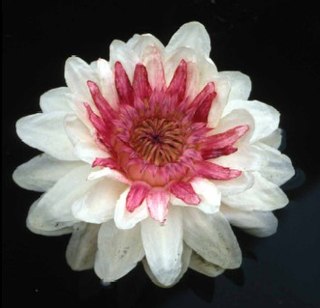
Orchids are plants that belong to the family Orchidaceae, a diverse and widespread group of flowering plants with blooms that are often colourful and fragrant.

Phalaenopsis, also known as moth orchids, is a genus of about seventy species of plants in the family Orchidaceae. Orchids in this genus are monopodial epiphytes or lithophytes with long, coarse roots, short, leafy stems and long-lasting, flat flowers arranged in a flowering stem that often branches near the end. Orchids in this genus are native to India, Taiwan, China, Southeast Asia, New Guinea and Australia with the majority in Indonesia and the Philippines.

The United States Botanic Garden (USBG) is a botanical garden on the grounds of the United States Capitol in Washington, D.C., near Garfield Circle.

Cattleya is a genus of orchids from Costa Rica south to Argentina. The genus is abbreviated C in trade journals.

Laelia is a small genus of 25 species in the orchid family (Orchidaceae). Laelia species are found in areas of subtropical or temperate climate in Central and South America, but mostly in Mexico. Laelia is abbreviated L. in the horticultural trade.

Rhizanthella gardneri, commonly known as western underground orchid, is a species of flowering plant in the orchid family and is endemic to the southwest of Western Australia. It is a herb that spends its entire life cycle, including flowering, at or below the soil surface. A head of up to 100 small reddish to cream-coloured, inward facing flowers surrounded by large, cream-coloured bracts with a horizontal rhizome is produced between May and July.

Laeliinae is a Neotropical subtribe including 40 orchid genera, such as Brassavola, Laelia and Cattleya. The genus Epidendrum is the largest within this subtribe, containing about 1500 species. This is followed by the genus Encyclia, with over 120 species.

Cattleya trianae, also known as Flor de Mayo or "Christmas orchid", is a plant of the family Orchidaceae. It grows as an epiphytic orchid, with succulent leaves, endemic to Colombia where it was nominated as the national flower in November 1936. That year, the National Academy of History of Argentina asked the Latin American countries to participate in an exhibition with the representative flowers of each country. The Colombian government gave the botanist Emilio Robledo the task to designate the most representative flowering plant of the country.

The Flora of Colombia is characterized by over 28,000 species of green plants.

Cattleya schilleriana is a species of bifoliate Cattleya orchid.

Cattleya tigrina is a bifoliate species of Cattleya orchid. The diploid chromosome number of C. tigrina has been determined as 2n = 40.

Cattleya walkeriana, or Walker's cattleya, is a species of orchid. It differs from most species of Cattleya by having inflorescences which arise from the rhizome instead of from the apex of the pseudobulb. In its native habitat it grows as either an epiphyte or a lithophyte, sometimes in full sun. Pseudobulbs are relatively short, bulbous or fusiform, with one or two ovate leaves at the apex. Inflorescence is one- or few-flowered, about 8" (20 cm) tall. Flowers are 4-5" (9-12 cm) across.

Cattleya warscewiczii, a labiate Cattleya, is a species of orchid.

Cattleya crispa is a species of orchid indigenous to the Tijuca Mountains north of Rio de Janeiro, Brazil, noted for its crisped and ruffled petals and lip. It is the type species for both the subgenus Cattleya subg. Crispae and its section Cattleya sect. Crispae.

Cattleya bicalhoi, commonly known as Laelia dayana, is a species of orchid endemic to Brazil, from southern Minas Gerais to Rio de Janeiro.

Cattleya lobata, commonly known as the lobed sophronitis, is a species of orchid endemic to Brazil.

Cattleya rex is a species of epiphytic orchid of showy white flowers, native to montane forests in Peru and Bolivia.

Cattleya elongata, the "cattleya with the elongated stalk", is an orchid species in the genus Cattleya endemic to the campo rupestre vegetation in northeastern Brazil.

Drosera magnifica is a species of sundew endemic to Pico do Padre Ângelo in eastern Minas Gerais in southeastern Brazil, where it grows among sandstone outcrops in herbaceous and shrubby vegetation. It is one of the three largest species of Drosera – the other two being D. regia from South Africa and D. gigantea from Australia – and was discovered in 2015 through images which appeared on the social network Facebook. It is the largest New World sundew, and it is closely related to Drosera graminifolia and Drosera spiralis. According to the IUCN Red List categories and criteria, it is considered Critically Endangered. Brazil is home to some 30 species of Drosera.

Neopestalotiopsis is a genus of plant pathogens in the family Sporocadaceae.




















